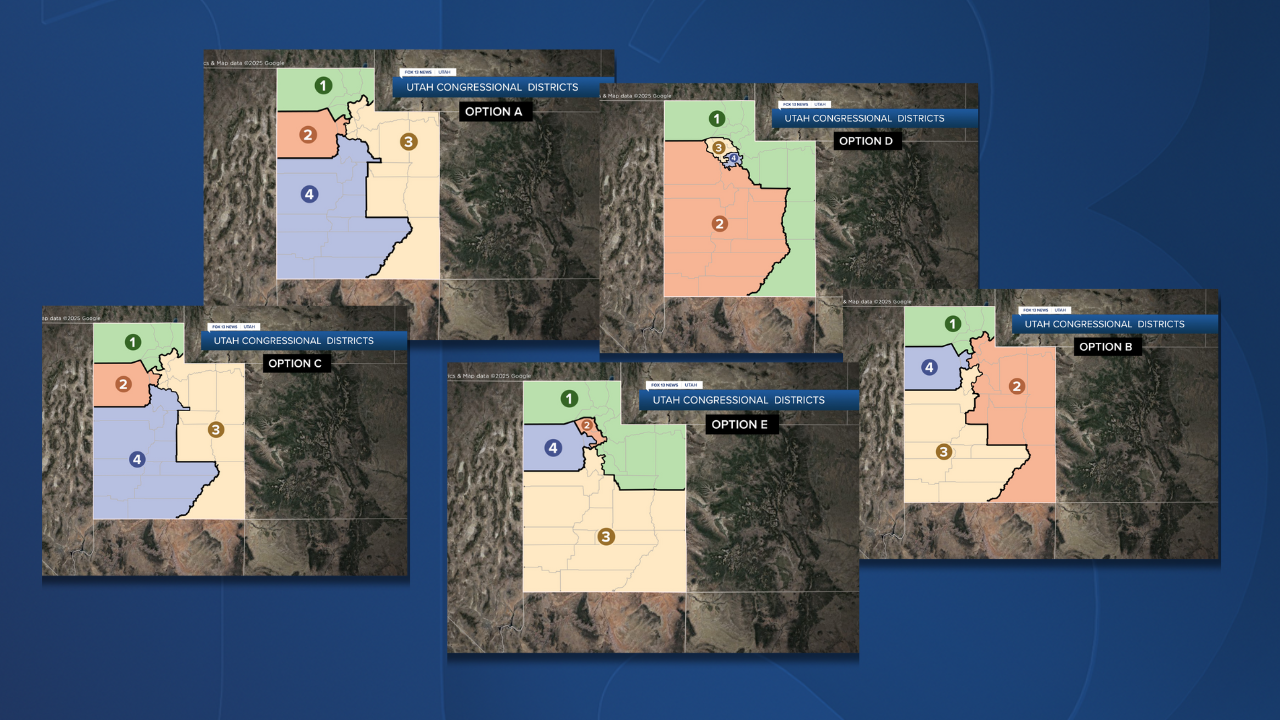SALT LAKE CITY — Congressional redistricting ordered by a judge is getting underway with the first of a pair of public hearings to react to proposed maps.
"We are doing this under the court’s order and under protest," the Utah State Legislature's Redistricting Committee Co-Chair, Sen. Scott Sandall, R-Tremonton, said at the beginning of the hearing.
On Monday, the redistricting committee also reacted to a bill introduced potentially for the upcoming special session that seeks to change how the process works in the state. The bill, proposed by Sen. Brady Brammer, R-Highland, would create a "statistical formula" for redistricting by putting "partisan symmetry" into code.
"It is used to measure partisan lines and determine if a party has a chance to win a seat and determine if the lines are fair," Sen. Brammer said.

But Democrats on the committee pushed back on the idea. Senate Minority Leader Luz Escamilla, D-Salt Lake City, worried it was the only metric being considered.
"You’re now trying to codify partisan bias as the only test to use and that to me is a gigantic red flag," she said.
Rep. Doug Owens, D-Millcreek, was also critical of the bill.
"The court said legislature go back and comply with the requirements in Prop 4," he said. "The first thing out of the chute is us changing the requirements of Prop. 4."
But Sen. Brammer insisted he was trying to provide clarity to something that even the judge found fault with in Prop. 4. While the committee took no action on the proposed bill, his legislation could appear during next month's special session when lawmakers must adopt a new congressional map to comply with the judge's ruling.

The bill concerned advocates for Prop. 4 and even one of the plaintiffs in the lawsuit against the legislature.
"It does appear to be a bit of a disregard for both the will of the people as well as a clear judicial ruling," Emma Petty Addams, the co-director of Mormon Women for Ethical Government and a plaintiff in the lawsuit against the legislature, told FOX 13 News. "I think people need to continue to speak up, contact their representatives and continue to be heard."
Elizabeth Rasmussen, the executive director of Better Boundaries, which ran the Prop. 4 campaign, said she had issues with the bill.
"That was not the intent of Prop. 4, and so we are against any last-minute changes to Prop. 4," she said.

The League of Women Voters of Utah and Mormon Women for Ethical Government sued the legislature, accusing it of overriding the will of voters who passed Prop. 4 in 2018, which created an independent redistricting commission. The legislature, insisting it has the sole constitutional authority for redistricting, overrode the citizen ballot initiative and instituted its own maps. The plaintiffs in the lawsuit alleged it was partisan gerrymandering to favor Republicans when it passed a map that split Salt Lake County in four pieces and created a mix of rural and urban districts. A judge sided with the plaintiffs and threw out Utah's congressional map. She also set a strict series of deadlines to comply with the ruling.
That's how we arrived at Monday's hearing, where lawmakers put forward five maps drawn by an expert they hired. Dr. Sean Trende insisted his maps comply with the requirements of Prop. 4, even though Democrat-heavy Salt Lake County still gets split under some of them.
"Is there any way to not split Salt Lake County when you draw congressional maps in Utah?" House Co-Chair, Rep. Candice Pierucci, R-Herriman, asked him.
"No," Dr. Trende replied.

Democrats on the committee questioned Dr. Trende's maps and if they were truly nonpartisan, since he has largely worked for Republicans who have hired him. Dr. Trende defended his maps and his work.
Public comment on the proposed maps largely called them an improvement on the current congressional boundaries. However, many still had significant concerns about splitting communities and the idea of any urban or rural combination. Adams said she had no position on the maps proposed, but was glad to see a better process for public engagement and picking new maps.
People can view the maps in detail and comment on them here. The Redistricting Committee will also take more public comment at a hearing on Wednesday on Utah's Capitol Hill. A final map will be advanced on Thursday for a 10-day public comment period before it is voted on in a special session of the legislature.
After that? The map goes back to the judge for her approval.





